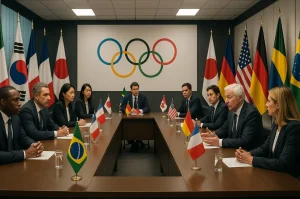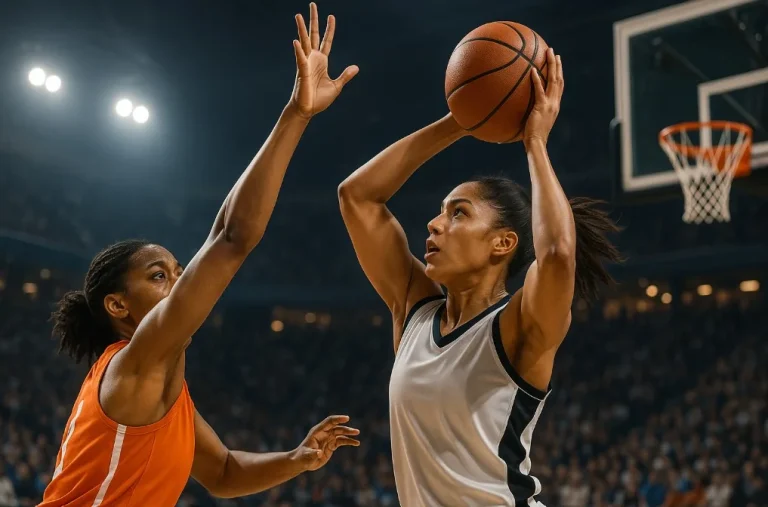Is Bowling an Olympic Sport?
Why is bowling, one of the world’s most popular recreational and competitive sports, still not part of the Olympic Games? With millions of participants across continents, a rich history that stretches back thousands of years, and a professional framework supported by international federations, the absence of bowling from the Olympics often surprises fans.
The Olympic Games have steadily expanded to include sports that reflect cultural relevance, global appeal, and youth engagement. Yet, bowling has remained on the margins despite repeated bids. To understand why, it is important to trace its journey, examine the challenges, and consider what the future might hold.
How Did Bowling’s History Influence Its Olympic Prospects?
Bowling is not a modern pastime but a sport with remarkable historical depth. Archaeologists have uncovered evidence of bowling-like activities in ancient Egypt dating back more than 5,000 years, where polished stones were rolled toward pin-shaped objects.
Similar versions appeared in medieval Europe, where it was often linked to social gatherings and community contests. By the 19th and 20th centuries, bowling had become a structured sport, with the establishment of rules, federations, and international competitions.
Its Olympic journey, however, has been uneven. Bowling came closest to Olympic recognition at the 1988 Seoul Games, where it was introduced as a demonstration sport. Twenty countries competed, and the event successfully highlighted bowling’s technical demands, skill-based scoring, and competitive structure.
Yet, demonstration sports do not award medals, and bowling failed to transition into the official program. That showcase remains a milestone, but it also highlights the difficulties the sport has faced in convincing the International Olympic Committee (IOC) of its readiness for Olympic status.
What Has Prevented Bowling from Becoming an Olympic Sport?

At first glance, bowling seems well-positioned for the Olympics. It has millions of participants, professional athletes, and a standardized rule system governed by the International Bowling Federation (IBF). Yet several obstacles have consistently held it back.
The biggest challenge is perception. Bowling is often seen as a recreational activity rather than a high-performance sport. While athletes undergo rigorous training, the widespread association of bowling with casual weekend games in bowling alleys undermines its competitive identity.
Another barrier lies in infrastructure. Unlike sports that can be easily staged in multipurpose venues, bowling requires specialized lanes, pin-setting machinery, and equipment that are costly to install temporarily for the Games. The IOC places significant importance on minimizing venue expenses, and this requirement has weakened bowling’s candidacy.
Finally, visibility plays a role. Although bowling enjoys strong followings in countries such as the United States, South Korea, and Malaysia, it does not command global television ratings on the same level as track and field or gymnastics. Without widespread broadcasting potential, the IOC often hesitates to expand its roster.
Where Does Bowling Already Have International Recognition?
Even if the Olympics remain out of reach, bowling is firmly embedded in international multi-sport competitions and world championships. Since 1978, bowling has been part of the Asian Games, a prestigious regional tournament where countries such as South Korea, Malaysia, and Singapore dominate.
The inclusion in the Asian Games demonstrates its credibility as a competitive discipline and its capacity to draw large audiences.
The World Bowling Championships, organized by the IBF, bring together athletes from more than 100 nations, further proving the sport’s extensive international footprint. Similarly, the Pan American Games adopted bowling in the 1990s, offering yet another platform for international recognition.
These tournaments illustrate that bowling’s competitive structure is solid, with clear rules, ranking systems, and professional athletes. In many ways, bowling already mirrors Olympic sports, with the only difference being its absence from the Olympic calendar.
What Efforts Have Been Made to Secure Olympic Inclusion?

The push for Olympic inclusion is not new. The IBF has been lobbying for decades, presenting detailed proposals to the IOC and aligning its regulations with Olympic standards. Bowling’s bid for the Tokyo 2020 Olympics showed how close it has come to achieving recognition.
It was shortlisted alongside sports such as karate, squash, and surfing. However, the IOC selected surfing, skateboarding, and sport climbing instead, prioritizing youth-oriented sports that offered cultural freshness and dynamic television appeal.
This outcome reflects a broader challenge: the IOC is not only seeking sports with a large player base but also disciplines that resonate with younger generations and capture global attention.
Bowling’s more traditional image has made it harder to align with this vision, though the IBF continues to innovate by introducing modern tournament formats and youth development programs.
How Does Bowling Compare to Other Sports Outside the Olympics?
Bowling is not the only sport striving for Olympic inclusion. Several globally popular disciplines share the same struggle.
| Sport | Global Popularity | Olympic Status | Major International Events |
| Bowling | High | Not Included | World Bowling Championships, Asian Games, Pan Am |
| Squash | Moderate | Not Included | PSA World Championships |
| Cricket | Very High | Returning in 2028 | ICC World Cup |
| Chess | Growing | Not Included | FIDE World Championship |
Cricket, despite being the second-most-followed sport globally with billions of fans, faced long resistance before its confirmation for the 2028 Los Angeles Games.
Squash, despite decades of campaigning and a strong professional circuit, has repeatedly been overlooked. Chess, too, has argued for recognition but is often excluded due to its lack of physical athleticism under Olympic criteria.
This table demonstrates that popularity alone is not enough. Factors such as youth engagement, venue adaptability, and television spectacle heavily influence Olympic inclusion. Bowling’s journey is comparable to these sports, illustrating the complex political and cultural dynamics at play.
Could Bowling Reinvent Itself to Attract the IOC?

For bowling to increase its chances, it may need to reinvent aspects of its presentation. Other sports once considered recreational, such as skateboarding and surfing, successfully repositioned themselves as youth-driven, visually exciting, and culturally relevant. Their Olympic inclusion was not only about skill but also about their appeal to new generations of viewers.
Bowling can follow a similar path by emphasizing faster-paced tournament formats, investing in youth leagues, and expanding digital broadcasting to global audiences.
Technological innovations, including portable lanes and interactive scoring systems, could also make the sport more adaptable for large-scale events. By focusing on modernization, bowling could change its reputation from casual recreation to dynamic competition, aligning better with Olympic priorities.
What Could the Future Hold for Bowling in the Olympics?
The next significant opportunity for bowling may come with the 2032 Brisbane Summer Olympics, where new sports will again be reviewed for inclusion. Advocates argue that bowling’s widespread popularity in Asia, North America, and Europe, combined with its organized federation and professional structure, makes it a strong candidate.
The IOC, however, continues to prioritize youth-friendly, media-attractive sports. If bowling can demonstrate that it meets these criteria through innovative competitions, global broadcasts, and broader cultural appeal, its chances may increase.
While its Olympic future remains uncertain, bowling continues to build momentum in international sports culture, keeping hope alive for its eventual inclusion.
What Do Experts and Fans Think About Bowling’s Olympic Chances?

Opinions are divided between optimism and skepticism. Supporters believe that bowling’s established global presence, structured governance, and professional athletes give it a natural claim to Olympic inclusion. They also point to the success of other sports once considered niche, suggesting that persistence can eventually pay off.
Critics, however, argue that bowling lacks the immediate visual spectacle and youth-driven excitement that the IOC increasingly seeks. They suggest that unless bowling undergoes significant image transformation, it will remain on the sidelines.
Fans, meanwhile, continue to champion the sport, seeing its exclusion as an oversight. For many, the inclusion of sports such as climbing and skateboarding demonstrates that even recreational activities can become Olympic disciplines with the right positioning. This fuels continued belief that bowling’s Olympic breakthrough may still be possible.
Frequently Asked Questions
Has bowling ever appeared in the Olympics?
Yes, it was showcased as a demonstration sport during the 1988 Seoul Games, but it was not part of the official medal program.
Why does the IOC hesitate to include bowling?
The IOC considers factors such as youth appeal, broadcasting potential, and cost efficiency. Bowling has struggled with perceptions as recreational, infrastructure challenges, and limited global television ratings.
Which international competitions already include bowling?
Bowling is a regular feature of the Asian Games, Pan American Games, and the World Bowling Championships, attracting participants from dozens of countries.
How does bowling’s popularity compare with Olympic sports?
Bowling is played by millions worldwide and ranks high in recreational and competitive participation, but it lags behind Olympic sports in global broadcasting reach.
Could bowling realistically appear in Brisbane 2032?
It remains possible. Advocates are actively campaigning, and innovations in presentation and broadcasting could strengthen its case for inclusion.
Has the International Bowling Federation changed its strategy?
Yes, the IBF has rebranded, modernized tournament formats, and introduced youth initiatives to align better with IOC expectations.
Are other popular sports also excluded from the Olympics?
Yes. Squash, chess, and American football are all examples of globally recognized sports that remain outside the Olympic framework despite large followings.







